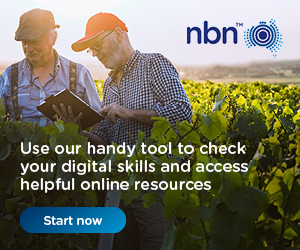Australian Farmers are environmental stewards of the land. It is a job they take incredibly seriously by implementing innovative farm and land practices, as well as validating new research to grow climate action innovation. This all leads to the best possible health of soil, water and biodiversity – as well as on-farm productivity.
Landcare Week 2021 looks to celebrate this work and the other actions of those in the community who do their very best to protect the landscape for future generations.

Celebrate this week at home, by taking a look below the surface and see just how important healthy soil is to food production and biodiversity!
Explore what your soil looks like at home
With the help of Landcare Junior little explorers at home can unearth the world below them to find out just how important the soil food web is. This is a great lockdown backyard activity and only requires a small amount of soil.

STEP 1

Identify a location for this investigation. Good locations to look for include under leaf litter, logs and in the mulch layer of the garden bed. Look for damp soil with plenty of organic material. (broken down leaf litter)
Assemble the materials you will need to conduct this investigation, including the digging/sampling tools and the resources you will need to view the soil samples.
STEP 2

Before heading outside, discuss the idea of recycling. Focus on things that the children will be familiar with, such as recycling paper.
Explain that earth’s processes also recycle. Nutrients are recycled when organic material, such as leaves, bark and branches break-down.
A nutrient is a substance used by an organism to survive, grow, and reproduce.
In soil, nutrient recycling is performed underground by the soil food web. Take a moment to introduce the topic of the soil food web. Ask the children if they can describe what a worm does. Tell the children that the worm is part of the soil food web, but there are also other components too.
Use the soil food web diagram and show the children other elements of the food web and how they are linked together.
Use online resources to research organisms that the children may encounter including:
- springtails
- nematodes
- the mycelial threads of fungi.
STEP 3

Head outside to the area that you have set-up for your investigation.
Outline safety aspects to the children, when conducting their observations.
- instruct how to use the garden trowels, spoons, paddle sticks or paintbrushes
- guide the children to tread lightly, taking care not to stand on anything living while exploring
- ask the children to return things back to how they found them, e.g. turned rocks or logs.
Ask the children to engage their senses during the investigation and take note of how the soil smells and feels as they sort through the organic layer.
STEP 4

Bring the samples to your investigation area.
Use the magnifiers or an app on a mobile phone or tablet to zoom-in on the samples.
Ask the children to explain what they see and what they wonder.
Ask the children: what do they think we would find if we looked in the leaf litter again in:
- 3 days
- 3 weeks
- 3 months.
For more activities, interactive sheets and information head to Landcare.







































Add comment